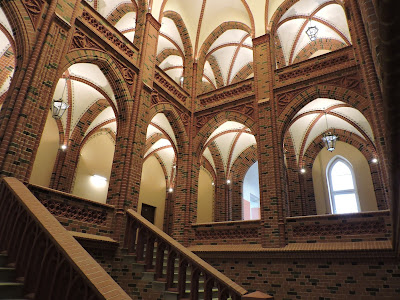What Just Happened?
Owing to a confluence of selected principles of orbital mechanics and solid geometry, we recently experienced an extraordinary, even miraculous event. The blend of the earth's elliptical orbit around the sun, the 23 1/2 degree tilt of the earth's axis to that orbital plane, and the planet's equatorial rotational speed of roughly 465.1 meters per second (just over 1,000 miles per hour) conspired to create a precise instant, (5:30 a.m. on Sunday, March 20, in Poznan, Poland) called the Vernal Equinox. Vernal from the Latin for spring, equinox combining the Latin for equal and night. Spring has arrived. Of course, for my readers south of the equator, you just experienced the Autumnal Equinox, but I don't want to make this too confusing. That said, the assumption that this event is accompanied by flowering trees, sunshine, and bright, pleasantly warm days appears to be somewhat premature. As the screen shot below suggests, as I write this, it is 4 degrees Celsius in Poznan (39 degrees Fahrenheit) in the early afternoon with chilly rain forecast later. There is a slight warming trend in the days ahead, but the long-range forecast has us drifting below freezing again in early April.

Ah, well, it's still great to be here, and all too soon -- less than four months now -- our Fulbright fellowship in Poland will draw to a close just as the summer high season will be at its apex. So we will patiently watch for those more tangible and experiential harbingers of spring.
Academic Activities
Summer classes are now five weeks spent with about 12 weeks remaining. My two formal classes have settled into comfortable size of 25 students each now that drops and enrollments have ended. My Friday morning informal seminar has gained a couple participants, so the combination of prep, grading, writing projects and other responsibilities keeps my days (and some evenings) pleasantly active and purposeful.
On a recent Saturday, I again led a half-day seminar for professionals pursuing weekend master's degrees. This time the topic was internal/employee communication, and I focused on organizing and planning for internal communication programs. Given nearly four hours, I include a variety of teaching approaches: lecture, discussion, video clips, small-group problem solving, case studies, etc. All 12 students were Polish, so I admire tremendously their ability to stay focused and engaged after a full work week as I teach in English. Their active participation in class activities tells me they found the session useful.
 |
| Freitag lecturing on internal/employee communication to Polish graduate students. |
 |
| Graduate students working in small groups to address a case study problem. |
We have a respite from classes this week Thursday and Friday as part of the Easter break. My classes will resume March 24.
A Quick Trip to Szczecin
Robin and I carved out three days for a train trip to the northwest Polish city of Szczecin (for non-Polish speakers, just say Stetson, like the cowboy hats, and you'll be close enough). This beautiful city near the Baltic coast and the German border has a storied, sometimes tragic history, and proved a delightful addition to our list of fine Polish cities visited. Over the centuries, Szczecin (Stettin in its German form) has been under the control of Sweden, the Holy Roman Empire, Denmark, the German Empire, the Kingdom of Prussia (as part of the province of Pomerania), Nazi Germany, and only became part of the People's Republic of Poland in 1945, then the Republic of Poland in 1989. Sadly, during World War II, as many as 15,000 Polish slave workers served in Nazi manufacturing plants in Szczecin. You may recall Winston Churchill's seminal "Iron Curtain Speech" in which he declared, "From Stettin in the Baltic to Trieste in the Adriatic an iron curtain has descended across the Continent." Anti-communist demonstrations grew in Szczecin during the 1980s despite the imposition in Poland of martial law. Pope John Paul II's visit in 1987 intensified sentiment and activities in that direction, culminating in strikes and eventual free elections in Poland in 1989.
Now, Szczecin is a thriving city of more than 400,000, with ports handling more than 10 million tons of cargo annually. Its nicely restored ducal castle, extensive Renaissance and Gothic architecture from the late 19th and very early 20th centuries, and countless churches and cathedrals make this a splendid city to explore. Fair but chilly weather permitted us to take in a great deal, though we lacked adequate time to enjoy the impressive list of intriguing museums.
A few of our photos are below, but our full array of photos from Szczecin may be viewed here:
Szczecin Photos.
 |
| The Ducal Castle, built originally in the 14th century, then reconstructed several times since. It was 60% destroyed during World War II, then reconstructed according to its 17th century design. |






















